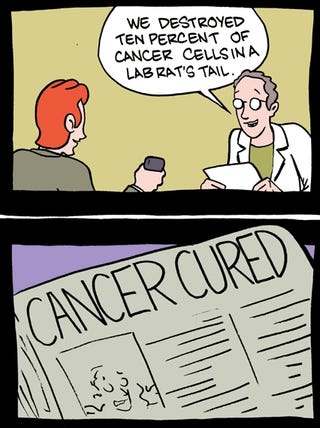LUSH – All Natural?
Far be it from me to defend a corporation, that’s not what I
am doing here, I will defend the misuse of science. LUSH is a company manufacturing
and selling beauty products. Promoting themselves as all fresh ingredients,
surely you have heard of them. I recently came across a blog post entailing ‘theugly truth about LUSH’.
The writer of this blog states she ‘randomly’ picked up some
products and looked into the contents.
If you notice, all of the words that aren’t written in green
are chemical names.


The truth: the first 7
ingredients suck. A foaming agent, A harsh preservative, a chemical similar to
anti-freeze, and a proprietary synthetic fragrance blend that could potentially
contain hormone disruptors. the remainder can't really make up for that.
So, let’s go through this:
Sodium Lauryl Sulphate: Detergant, surfactant and found in MANY
soaps, shampoos, face creams. Irritant when exposed to LARGE amounts
frequently.
Ammonium Laureth Sulphate: Pretty much the same as above,
concentrations tend to be lower than 1%
Cocamide Monoethanolamine: Fatty acid amines produced from coconut
oil (basically, it didn’t say coconut oil – so it must be bad for you?)
Fragrance: Really don’t need to explain this one. Pretty much found
in every cosmetic product.
Propylene Glycol: MANY applications; one of which is a solvent in pharmaceutical
products such as oral and topical solutions as well as diazepam. But it is also
used in De-Icer. And you can’t drink De-Icer, so it must be bad for you.
Benzyl Alcohol: Again, many applications, soaps and perfume is one
of them as it is a natural product of many ‘essential oils’.
Methyl and propylparaben: regulated and well used in cosmetics all
over. In fact, the EU limit is 0.4% and LUSH state they only us 0.2%.
My point: Chemical names, as
scary as they may be (try drawing them and remembering their names in an exam,
trust me they become scarier) have MANY uses. Some are used in plasticisers and
ALSO used to make food and beauty products. Yeah, some are toxic, but what isn’t?
Everything is toxic to some extent ‘Only dose makes the poison’.
This is just one of the examples
she gives in the blog, 3 more products come under attack with scary sounding
chemical names. She even claims that:
‘the majority of the ingredients are not safe, they are soley used to
extend the products shelf life’
Well, yeah. You create a product
in mass amount, you want to preserve it. Who wants to buy some soap or face-cream
for it to turn mouldy in the next 3 days? And how are they not safe? Every
product she claims isn’t tested; has indeed been tested. She then moves on to
claim that LUSH only promote that everything is natural, which they avidly do
not. Many of the products appear to be so, with the exception of a few that
require synthetic preservatives – but this is effectively communicated.
“While we might read water and think, "Oh
good, water is the most natural ingredient ever," it really means that the product
requires strong preservatives to prevent molding.”
So, be careful with almost every product you have ever used/eaten/drank,
you will have consumed some form of preservative *eye roll*. As
I have previously stated in many other blogs, transparency is crucial in a
scientific world. LUSH provide, with great honesty, just that. They provide an
entire section of their website dedicated to detailing the ingredients and
their use, so you can look up as to exactly why it is in there. The word 'fresh' appears to be mistaken for 'every single product we sell is 100% natural ingredients no chemicals whatsoever chemicals are bad we hate chemicals' - which is an easy extrapolation to make, clearly.
When you read the backgrounds of the people who write these blogs, you get a sense of the lack of scientific education they have. Mostly denoting chemicals as 'toxic' and believe everything should be all natural. I am all for people investigating companies, many of which do exactly what this blog is trying to state they do; lie. However, using chemical names and a lack of any scientific education (and quite frankly a lack of reading skills) to fear-mong people to not purchase products is a little foodbabe-ish.

